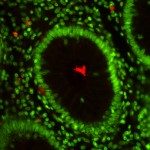Link to Pubmed [PMID] – 12615213
Curr. Opin. Microbiol. 2003 Feb;6(1):7-14
The type III secretion pathway is used by numerous Gram-negative pathogenic bacteria to deliver proteins within the membrane or the cytoplasm of eukaryotic cells with which these bacteria interact. Secretion is regulated by external signals. This requires that, before being secreted, proteins are stored in the cytoplasm where they need to be stabilised, separated from other interaction partners, and maintained in a secretion-competent state. Specialised, energy-independent chaperones play various roles in these functions by associating in the cytoplasm with proteins before their secretion. Some chaperones are also directly involved in modulating transcription in response to secretion.

